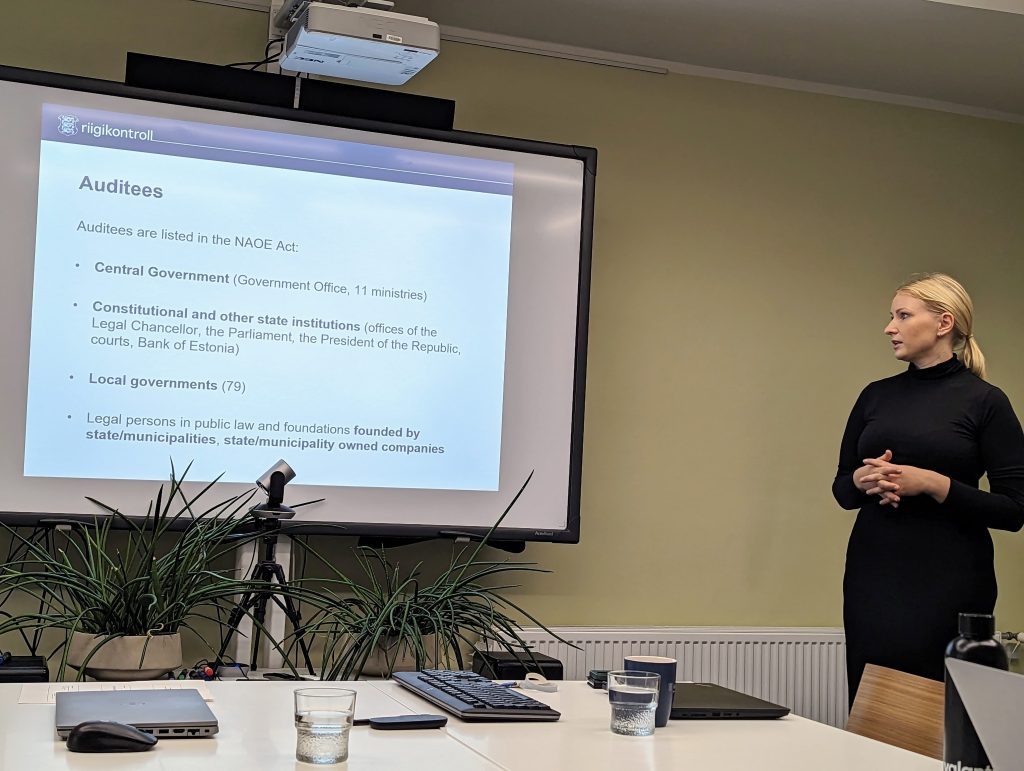
On the last day of our one-week study trip, we got the opportunity to visit the Estonian National Audit Office (NAO). In Estonian, it translates to “Riigikontroll” the name itself holds the word “control” which implies that the NAO acts as an oversight institution of the government and other public sector entities in Estonia. It is an independent unit, which is primarily responsible for evaluating the government’s budget implementation. In addition, the NAO also checks if taxpayers’ money spent economically, efficiently and effectively (/ following the 3E principle of public finance). Most countries in the world have such an oversight actor. However, in Estonia it’s special to see that this institution audits the federal state as well as the local governments.
After getting a good rest in our Airbnb apartment, we met our colleges in the heart of the oldtown. Before our visit and entering the NAO, we briefed our colleagues about the institution and its unique role in the Estonian public sector. We were heartily welcomed by Krislin Kivi, Head of International Relations, and Janus, a senior auditor.
Krislin started off explaining to us the legal basis of the NAO, which is protected by the Estonian constitution and the National Audit Office Act itself. The operating chief officer is called the “Auditor General”, who is proposed by the president of the republic and elected by the Estonian parliament for a five-year term. Since 2018, Janar Holm has been serving as auditor general and he is now in his second term. We observed that the Auditor General has a rather short term of office compared to other countries like Germany, where the corresponding mandate is given for a period of twelve years.

Krislin explained that the number of NAO staff members encompasses 80 employees, out of which 65 are engaged in auditing activities. The NAO is a Westminster type of Supreme Audit Institution (SAI) and operates with an annual budget of roughly 5 million Euros. The term “Westminster” refers to the nature and organization of the institution and they report their findings directly to the parliament (legislative) and give recommendations, which are however legally not binding, as our lecturer Pascal Horni highlighted during our joint debriefing after the visit.
The second part of the presentation provided us an in-depth insight into Performance Auditing and Stakeholder Communication, which was conducted by Janus.
Janus pointed out that Performance Auditing was introduced to Estonia in 1999 and since then, it has been gaining popularity. He elaborated on the 3E´s when it comes to Performance Audits because the purpose is to try to provide information on the effectiveness of taxpayer`s money spent by the government for various purposes. Effectiveness refers hereby to a wider significant outcome, which can be measured with quantitative or qualitative data. The current and future challenge is to generate authentic big data, which can be used to evaluate the effectiveness of a policy (tax spending).
After leaving the office we reflected on the functioning of the NAO and its significance in a democratic system and how it keeps checks and balances so that a healthy development is possible. We also shared our insight from the entire week and thanked our mentors for the carefully planned week.
This visit also marked the end of an exciting week in Tallinn and Estonia. Estonia is one of the few nations which able to grow at economically and socially at this rate in the last decade. This growth was certainly not a gift to them, they were brave and made the right choices to achieve their goals.